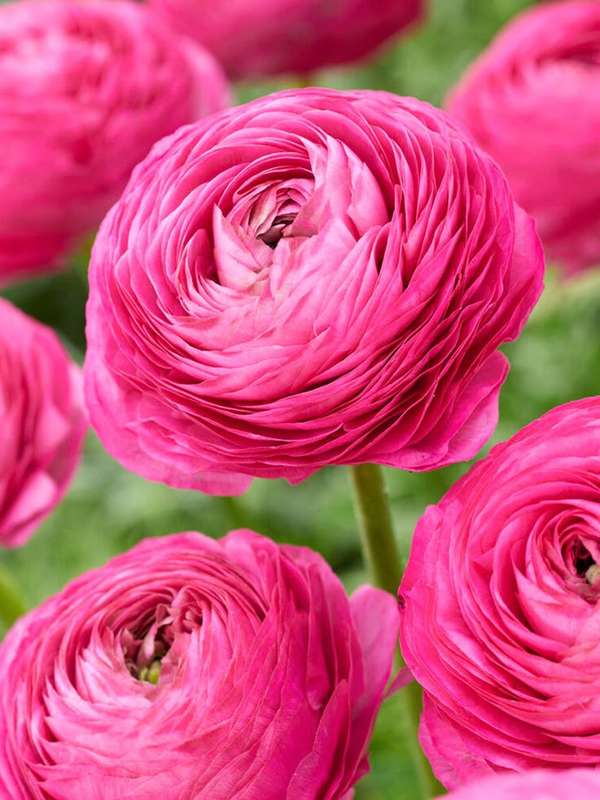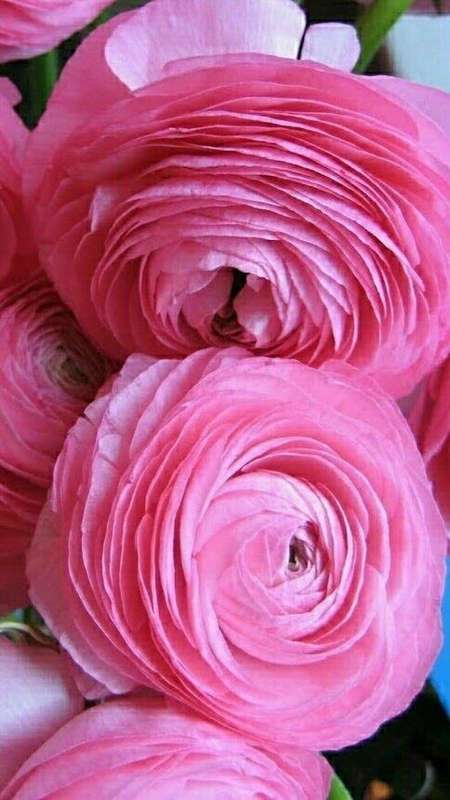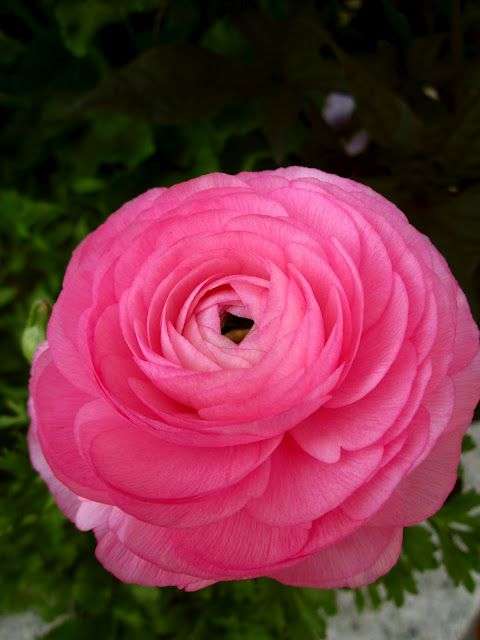





Ranunculus - Pink - 25 bulbs p-pack
Check my rate
| Main centres: | 1-3 business days |
| Regional areas: | 3-4 business days |
| Remote areas: | 3-5 business days |






| Main centres: | 1-3 business days |
| Regional areas: | 3-4 business days |
| Remote areas: | 3-5 business days |
Ranunculus (Persian buttercups) are highly valued for their layered, rose-like blooms in various colors, including soft and vibrant pink. They are excellent for flower beds, containers, and cut flower arrangements.
In South Africa, Ranunculus thrives in cooler months, making autumn planting (March—May) ideal for spring flowering (August—October).
Climate:
Prefers cool temperatures (15—20°C).
Best suited for autumn planting (March—May) with blooms appearing in late winter to early spring (August—October).
Struggles in extreme heat, so avoid planting in late spring or summer.
Ideal for Western Cape, Highveld, and regions with mild winters.
Soil Requirements:
Well-drained, loamy or sandy-loam soil, enriched with compost.
pH range: 5.5—7.0 (slightly acidic to neutral).
Heavy clay soils should be amended with organic compost and sand for better drainage.
Best Planting Time:
March—May for spring flowering.
Soil temperature should be below 20°C for the best germination and growth.
Preparing the Corms:
Soak corms in lukewarm water for 4—6 hours before planting to help with hydration.
Let them dry slightly before planting to prevent rot.
Planting Depth & Spacing:
Depth: Plant 5—7 cm deep, with claw-like roots facing downward.
Spacing: 10—15 cm apart for proper airflow and growth.
Row spacing: Leave 25—30 cm between rows if planting in flower beds.
Watering:
Keep soil moist but not soggy.
Water deeply once or twice a week, depending on rainfall.
Reduce watering when foliage begins to yellow, signaling dormancy.
Fertilizing:
Before planting, mix compost or well-rotted manure into the soil.
During growth, apply a low-nitrogen, high-phosphorus fertilizer every 2—3 weeks to boost flowering.
Avoid excessive nitrogen, which promotes foliage over flowers.
Mulching:
Apply a thin layer of organic mulch (straw, bark) to retain moisture and suppress weeds.
Common Pests:
Aphids, spider mites, and thrips — Treat with neem oil or insecticidal soap.
Slugs and snails — Use organic slug pellets or copper tape.
Common Diseases:
Powdery mildew & botrytis (gray mold) — Ensure good airflow and avoid overhead watering.
Root rot — Prevent by ensuring well-drained soil and avoiding overwatering.
Blooming Time:
Flowers appear 8—12 weeks after planting (August—October).
Cutting for Bouquets:
Harvest when buds begin to open for a longer vase life.
Cut stems early in the morning and place in cool water immediately.
Pink Ranunculus blooms can last 7—10 days in a vase.
After flowering, allow the foliage to yellow and die back naturally.
Dig up the corms, dry them completely, and store in a cool, dark, dry place (such as a paper bag with dry peat or sand).
Replant in autumn for the next season's bloom.
Good Companion Plants:
Ranunculus pairs well with tulips, daffodils, freesias, and crocuses.
Low-growing annuals like pansies or alyssum help cover the soil and create a vibrant display.
Crop Rotation:
Avoid planting in the same spot as other bulb flowers year after year to reduce disease risk.
Pink Ranunculus is a stunning addition to South African gardens, thriving in cool weather with well-drained soil and proper watering. With minimal care, they produce gorgeous, long-lasting blooms, perfect for gardens and floral arrangements.